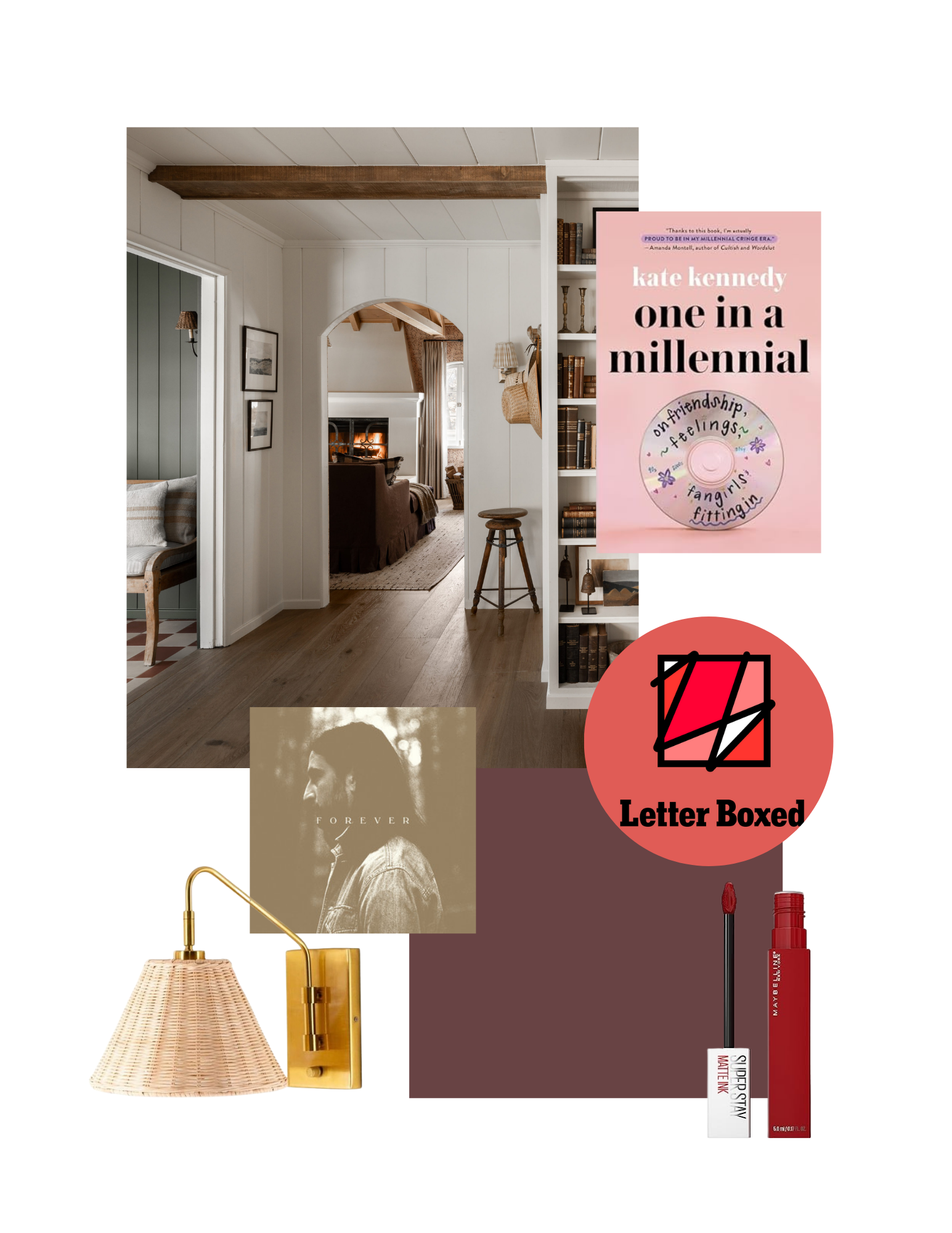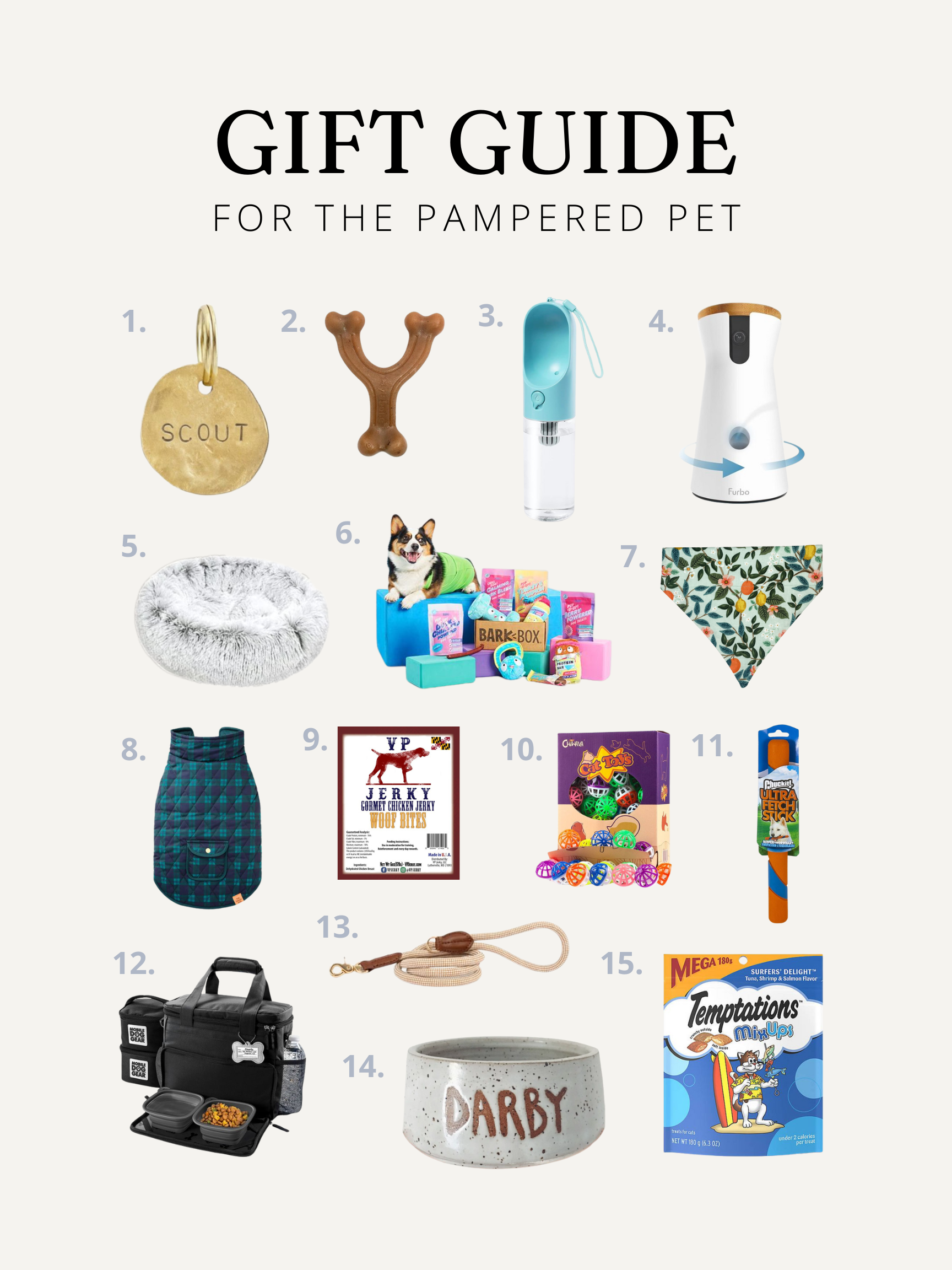If you’ve been following along with me on Instagram, you know that we spent our last weekend of summer giving our guest bathroom a budget makeover. We painted the bathroom and changed out the mirror and lighting when we moved in, but since then it’s remained pretty much untouched. So needless to say, it was past time to give this room a little love. In addition to replacing the vanity, sink, and faucet, we installed beadboard wall treatment and finally did some much needed caulking. But the thing that made the biggest impact was installing peel and stick tiles over the existing tile in this bathroom.
Our house was built in the 1970’s but updated in the early 2000’s, so this bathroom was completely devoid of charm. The biggest offender was the pinky beige floor tiles, but I knew we couldn’t afford to replace them completely. I spent about two years debating the best way to cover them up, and when Chris Loves Julia announced their peel and stick tile line last year, I knew it was the solution! I’d been loving the checkerboard floor trend, so I was thrilled to see that each package of their 12×12 Bonneville floor tiles features 5 white marble tiles and 5 gray marble tiles. I can confirm that pictures don’t even do them justice – they have a gorgeous low luster finish and the colors are perfect. I actually ordered these tiles last December and they’ve been sitting in our garage since then. Since I knew that we’d be replacing our vanity, I wanted to wait until we removed the existing one to do the floors so I could do everything in one fell swoop. Now that we’ve completed our budget bathroom makeover, I’m excited to share our process with you!
When I was searching for ideas on how to cover our bathroom floors on a budget, I saw tons of tile painting tutorials but not many for installing peel and stick tile – so I thought it might be helpful to share the steps I took to take these floors from dated to beautiful in just one weekend. Keep reading to learn how you can cover your existing tile floors with peel and stick tile for an updated look on a budget!
Supplies & Budget Breakdown:
- 10 Boxes Wallpops Grey & White Marble Peel & Stick Floor Tiles – $100.56
- Ruler – $6.97
- Utility Knife – $0 (already had on hand)
- Gorilla Glue – $9.98
- Contour Gauge Tool – $0 (already had on hand)
- Scrap Wood (at least 14 inches by 14 inches) – $0 (already had on hand)
- Construction Paper – $0 (already had on hand)
- Scissors – $0 (already had on hand)
- Pencil – $0 (already had on hand)
- Scrubbing Brush – $0 (already had on hand)
- Clorox Spray Cleaner – $5.58
- Microfiber Cloth – $0 (already had on hand)
- Total Cost: $123.09
Step-By-Step Tutorial:
- If possible, remove your bathroom vanity from the room to ensure the floors are completely clear. You can decide whether or not you’d like to remove your toilet – for me, it wasn’t worth the extra step so I opted to keep the toilet in place.
- Scrub the bathroom floors thoroughly with Clorox and a scrub brush. Ensure that the floors are completely clean and there’s no debris remaining. After scrubbing, go over the floors with a microfiber cloth to ensure any remaining dust or dirt is picked up and the floors are completely dry.
- Start by laying out the tiles and dry-fitting them in the room, just like you would with real tiles. Although most tutorials I found recommended starting in the middle of the room and going from there, I wanted to ensure there weren’t any weird gaps at the entrance of the room, so I started at the door threshold. I chose to do a diamond pattern, alternating between white tiles and gray tiles. If you’re installing over existing tile, I’d recommend doing this as opposed to installing the tiles in a square pattern directly over the existing tiles, as that would most likely cause the corners of the tiles to pull up more easily. Installing in a diamond pattern that *doesn’t* match up with the existing tile will ensure that the edges of your tiles don’t line up with the existing grout lines.
- For areas where you can’t lay down a tile because it will need to be trimmed down (like around the toilet), write down how many of each color you will need so you can ensure you have enough tiles on hand to cover the entire floor.
- Once you’re happy with the dry fitted tile placement, it’s time to start installing the tiles! Starting at the threshold of the room, install the tiles one at a time. Carefully remove the paper backing from the tile and place it on the floor, ensuring that you press down along the edges and in the middle for a few seconds to make sure it’s fully adhered.
- For tiles that will need to be trimmed along a straight line, measure the distance from the corner of the space where the tile will go to the wall. Take note of the measurement and use that to determine how much of the tile you’ll need to cut down. Draw a straight line on the tile in pencil using a ruler, then place the tile on top of your piece of scrap wood and run a utility knife over the line a few times. Once there’s enough of a groove in the tile, simply snap it to remove the excess and install the tile!
- For tiles that will need to be trimmed at odd angles, there are several ways you could go about doing this. For me, it took a lot of trial and error and I found that the easiest way was to use the contour gauge tool to determine the angle of the cut, then trace it onto a piece of construction paper and cut it to create a template. This took quite a bit of time, but I’m really pleased with how the cuts turned out. Once you have your construction paper template, trace it onto the tile, place the tile on your piece of scrap wood, and cut it using a utility knife. For curved angles, you won’t be able to simply snap it off, so make sure you’re using a sharp knife. I found it was best to remove small pieces at a time, working my way through the cut slowly. Once you’ve finished cutting, dry fit the tile into place. You may need to do some additional trimming for the perfect fit – that’s okay! Take your time and trim off a little at a time until it fits perfectly. Then install the tile as usual!
- Once all tiles have been installed, give the floors a good once-over. If your existing floor tiles were a bit textured like mine, the tiles may be pulling up a bit in a few places. If you notice any tiles that seem a bit loose, use the Gorilla Glue to ensure they’re firmly adhered to the floor.
- When you’ve ensured that all tiles are firmly adhered to the floor, give the floor a thorough sweeping or run the vacuum over it, and you’re done!



Other Tips:
- This is a project where attention to detail is crucial, so be patient and take your time! In the long run, you’ll be glad you made cuts precisely and carefully and you’ll end up with a much better result.
- We had already had a lot of the supplies needed for this project on hand, and the budget breakdown reflects that – but even if you had absolutely nothing on hand to start, I’m still confident you could knock out this project for less than $200!
- Although I admittedly haven’t done this yet, to make the floors really feel seamless in the space, I’d recommend caulking the edges where the floor meets your baseboards or walls.
- Learn from my mistake and bring a cushion into the room to sit on while you install the tiles! I sat directly on the tile floor for hours and my tailbone was sore for DAYS. You’ll also save yourself a lot of back pain if you do your more complicated cuts at a table so you can give yourself a break from hunching over.
- When in doubt, order more tiles than you think you’ll need! These tiles are designed to be water resistant, but if you’re installing them in a bathroom, there’s always the chance that a leak could happen and I don’t feel confident that these would withstand that. These tiles are also quite hard, so if you drop something on them at an angle, they can chip just like real tiles. I’d recommend ordering one extra box to keep in your garage or storage space so you have some backup tiles in the event that any need to be replaced.
The Results
It’s now been about three weeks since we completed this project, and my only regret is not doing it sooner! I spent three years staring at the ugly floors in this bathroom and I’m kicking myself thinking about how I could have transformed them so much earlier for less than $150. They look a million times better than the dated tile that was in this space before!

This project was a lot of work, but believe me when I say it was completely worth it. This is one of those projects that isn’t difficult – it’s just time consuming. I installed these tiles in our guest bathroom over the course of two days, and I’d estimate that I probably spent between 8 and 10 hours on the installation. A big portion of that time was spent perfecting cuts – I didn’t want to waste any tiles by over-cutting, so if a tile didn’t fit I just trimmed off a tiny bit at a time until the fit was perfect. Now that I see the finished result, I’m so glad that I took my time and I couldn’t be happier with how it turned out!
Since it’s only been a few weeks since we installed these, I’m interested to see how they hold up. I have noticed that one or two of them do seem to be lifting a bit, so I’m going to keep some Gorilla Glue on hand knowing that I may need to do some touch-ups here and there. But to be honest, even if these don’t last forever, this project was still absolutely worth it to me! I’m visual person and my mood is heavily influenced by my environment, so to me projects like this are worth it even if they don’t last forever. Ever since we completed the floors, I’ll find any excuse to stare at these beautiful tiles. Although I would have completely replaced the tile if we had the budget, this was the perfect inexpensive way to make this bathroom feel more “our style” and I’m thrilled with how it turned out!




